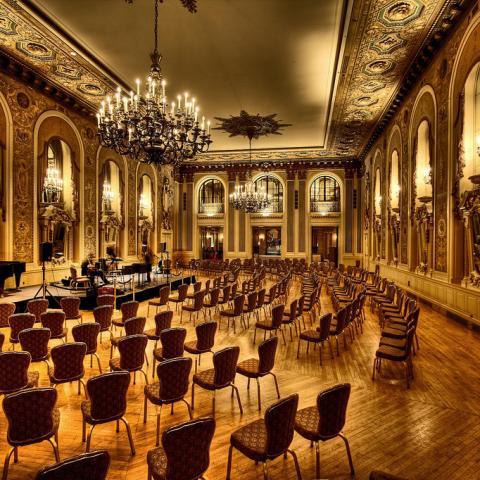Symphonies by Haydn and Schubert got a well-deserved reception at the penultimate concert of the Delaware Symphony Orchestra’s chamber series at the Hotel du Pont’s Gold Ballroom on Tuesday. March 21, 2017.
It was a trombone concertino by Swedish composer Lars-Erik Larsson, though, that piqued the interest of concertgoers. Little surprise there. Compositions featuring solo trombone are rarities on classical music programs. But the trombone has come a long way. No longer does it have to remain content to sit at the back of the orchestra idly counting rests. The repertoire for it has grown — albeit slowly.
Natalie Mannix, principal trombone for the DSO, was outstanding in this relatively obscure Mid-20th Century work. Her playing was sensitive and passionate; her tone noble and commanding. In the second movement, her instrument vocalized a soulful melody across a wide range of pitches and dynamics. The orchestra provided proper support. The third movement displayed a tongue-in-cheek humor: Its ponderous notes poking fun at the pompous blasts of the outer movements.
Schubert’s much-loved Symphony No. 5 in B flat needs no further introduction. Maestro David Amado’s intimate rendering harkened back to the kind of performance Schubert’s family orchestra might have given. The result was a clarity that revealed the composer’s often overlooked skills as a contrapuntist as well as the delightful writing for the horns. Cellos and basses were also given a real presence here. Add to that sensible tempos — has the trio section of the third movement ever been more lovingly played? — and the right touch of the dramatic and you had one of the most graceful and charming interpretations anyone could ask for.
The concert opened with performance of Haydn’s Symphony No. 59 in A major (the Fire Symphony). This is indeed a fiery work, with many traits placing it squarely in the composer’s so-called Sturm und Drang group of symphonies: Driving rhythms, unusual harmonic schemes and sudden contrasts in orchestration and dynamics. Amado gave free rein to the horns, allowing them to deliver all the effects Haydn conjured up for them. Throughout the work, these spectacularly difficult parts were played by John David Smith and Lisa Dunham with remarkable accuracy and skill.
This post appears courtesy of Delaware Arts INfo Blog.





